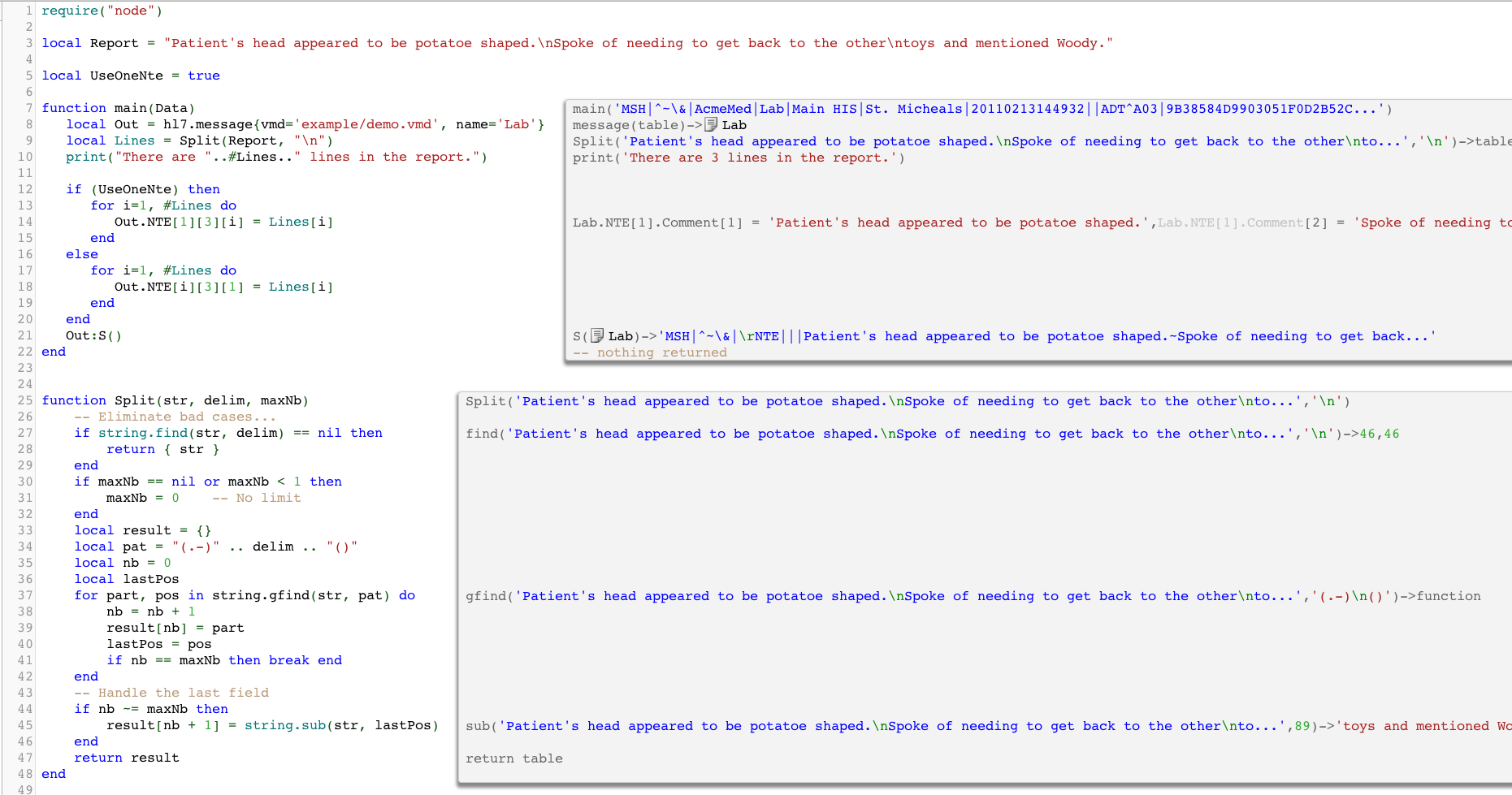This post was originally written for Iguana 5 so it contains version 5 screenshots, and may contain out of date references.
This is a very common problem in HL7. Some systems expect textual reports to be formatted into an OBX or NTE segment with a repeating field, while others want each line of the report in its NTE. For instance:
MSH|^~&| NTE|||Patient's head appeared to be potatoe shaped.~Spoke of needing to get back to the other~toys and mentioned Woody.|
or
MSH|^~&| NTE|||Patient's head appeared to be potatoe shaped.| NTE|||Spoke of needing to get back to the other| NTE|||toys and mentioned Woody.|
Both forms can be easily supported using the Translator. Here is a rough example:

Here’s a copy-paste-able snippet:
local Report = "Patient's head appeared to be potatoe shaped.\nSpoke of needing to get back to the other\ntoys and mentioned Woody."
local UseOneNte = true
function main(Data)
local Out = hl7.message{vmd='example/demo.vmd', name='Lab'}
local Lines = Split(Report, "\n")
print("There are "..#Lines.." lines in the report.")
if (UseOneNte) then
for i=1, #Lines do
Out.NTE[1][3][i] = Lines[i]
end
else
for i=1, #Lines do
Out.NTE[i][3][1] = Lines[i]
end
end
Out:S()
end
function Split(str, delim, maxNb)
-- Eliminate bad cases...
if string.find(str, delim) == nil then
return { str }
end
if maxNb == nil or maxNb < 1 then
maxNb = 0 -- No limit
end
local result = {}
local pat = "(.-)" .. delim .. "()"
local nb = 0
local lastPos
for part, pos in string.gfind(str, pat) do
nb = nb + 1
result[nb] = part
lastPos = pos
if nb == maxNb then break end
end
-- Handle the last field
if nb ~= maxNb then
result[nb + 1] = string.sub(str, lastPos)
end
return result
end
